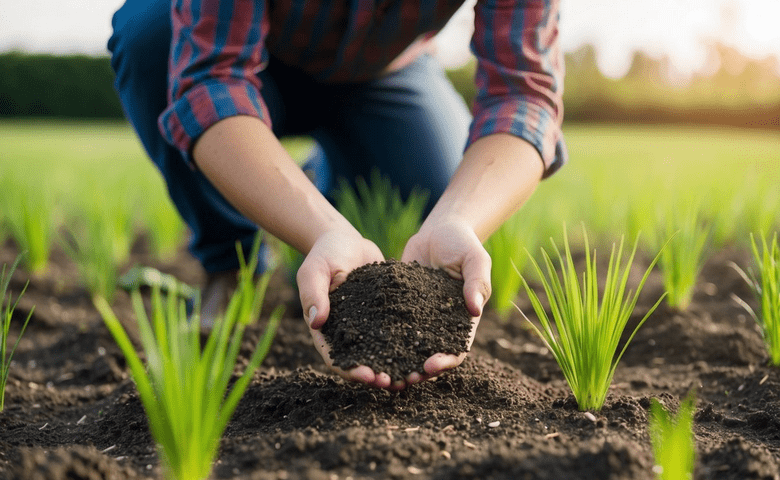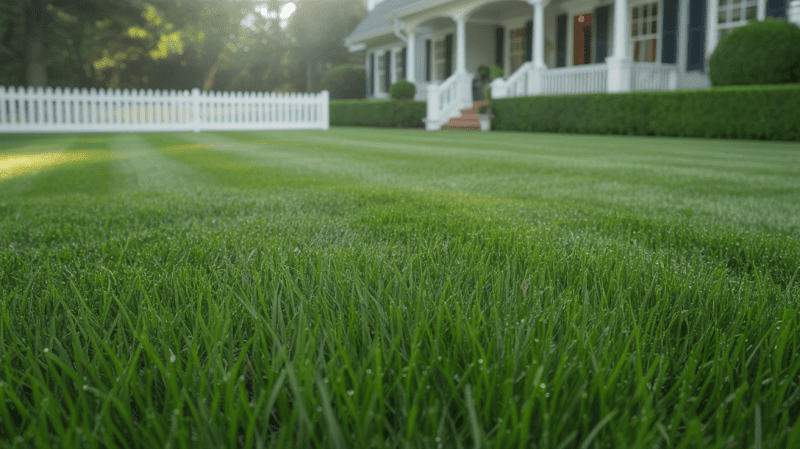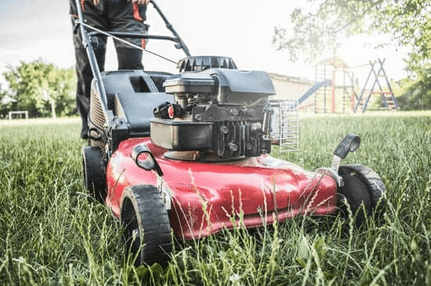Simple tips to avoid common pitfalls and grow a lush lawn:

Essential Tips for Success
Planting grass seed might seem simple, but if not done correctly, it can lead to a patchy lawn and wasted effort. Understanding the top mistakes can help us achieve a lush, green lawn. Many people think that just scattering seeds will do the trick, but proper soil preparation is essential for success. Healthy soil makes it easier for seeds to germinate, giving us the best chance for a thick and even yard.
Choosing the right type of grass seed is also crucial, as different seeds thrive better in various climates. It's common for people to neglect researching this, leading to poor growth and a mismatched lawn aesthetic. Beyond this, oversights during planting, such as incorrect seed depth, can disrupt growth. Regular watering and care after planting can't be ignored, as they play a significant role in maintaining the new lawn.
Key Takeaways
-
Proper soil preparation is key for grass seed success.
-
Choosing a suitable grass seed for your climate ensures better growth.
-
Continuous care and correct planting techniques prevent common lawn issues.
Preparing the Soil for Planting
To ensure the grass seed thrives, we must prepare the soil carefully. This involves conducting a soil test for nutrients, optimizing soil temperature for germination, and improving soil quality with aeration and mulching.
Conducting a Soil Test
A soil test helps us understand what nutrients are present or lacking. We start by taking multiple soil samples from different lawn areas to get an accurate overview. Kits are available at garden centers and provide insight into the soil's pH and nutrient levels.
Knowing the pH is crucial. Grass typically grows best in soil with a pH between 6.0 and 7.5. If the soil's too acidic or alkaline, we may need to adjust it with lime or sulfur.
The test also informs us about nutrient deficiencies, like nitrogen or potassium. We use the results to create a plan, adding organic matter or fertilizers if needed.
Optimizing Soil Temperature
Soil temperature plays a major role in seed germination. We aim for consistent warmth, ideally between 50°F and 65°F. This range is perfect for most grass seeds to sprout successfully.
A soil thermometer makes monitoring the temperature easy. We check it a few inches below the surface. If the ground is too cold, seeds might not grow well or germinate at all.
We can tweak soil temperature by timing the planting season properly. For example, we might plant later in spring or earlier in fall, ensuring the seeds have the best chance to grow.
Improving Soil Quality Through Aeration and Mulching
Aeration helps the soil breathe and improves root penetration. By creating small holes, we allow air, water, and nutrients to reach the roots more effectively, making the environment much healthier for new seeds.
We can aerate with a simple tool like a garden fork or more efficiently with a mechanical aerator. Choosing the right method depends on the lawn size.
After aeration, mulching retains moisture and stabilizes temperature. We use organic materials like straw or shredded leaves. This layer provides insulation and protects the seeds from being washed away by rain. By combining aeration and mulching, we set the foundation for a thriving lawn.
Choosing the Right Grass Seed
Picking the right grass seed is crucial for a healthy lawn. It's essential to factor in your climate and understand the differences between warm and cool-season grasses. This ensures robust growth and a thriving lawn throughout the year.
Understanding Warm-Season and Cool-Season Grasses
Grass types are generally divided into two categories: warm-season and cool-season grasses. Warm-season grasses, like zoysia, thrive in hot weather and grow best in southern regions. They typically turn brown when temperatures drop.
Conversely, cool-season grasses such as Kentucky bluegrass, fescue, and perennial ryegrass perform better in cooler climates and are ideal for northern areas. They stay green in cooler months but may struggle in intense heat.
Identifying the right type of grass for your region is critical. A mismatch can lead to poor growth and increased maintenance. By understanding which category fits your climate, you set a solid foundation for a healthy, resilient lawn requiring less intervention.
Selecting Grass Seeds for Your Climate
Our climate plays a pivotal role when choosing grass seed. Using cool-season seeds like Kentucky bluegrass or fescue is advisable in northern climates. These types endure cooler temperatures and recover well from winter dormancy.
For southern areas, warm-season grasses such as zoysia are preferred. They handle high temperatures and sunshine better and provide lush coverage during the hottest months.
It's not only about the climatic zone but also specific growing conditions. Areas with heavy foot traffic may benefit from perennial ryegrass due to its quick germination and resilience. Ensuring grass density and selecting blends tailored to environmental factors will result in a more vigorous and attractive lawn.
Planting and Germination Process
When planting grass seeds, we need to ensure the seeds are planted correctly and provided with the right conditions for germination. We can promote healthy growth and a lush lawn by paying attention to techniques and strategies in the early stages.
Correct Seeding Techniques
Choosing the right type of grass seed for our specific climate is essential. Once we have the right seed, it’s important to prepare the soil by removing debris and weeds and loosening the soil for better root development.
Uniform distribution is crucial when spreading the seeds. We should aim to plant the seeds at a consistent depth, usually 1/8 to 1/4 inch deep, so they can germinate easily. Lightly raking the seeds into the soil helps with this process.
Irrigation Strategies for Seedlings
Watering is crucial to ensuring seeds germinate properly. Initially, we need to keep the soil consistently moist to support germination. Our goal is to provide enough water without causing puddles or washouts, especially in the early stages.
As seedlings emerge, it's important to adjust our watering schedule. Reducing the frequency but increasing the depth helps encourage deeper root growth. We often recommend watering early in the morning to minimize evaporation and maximize absorption.
Monitoring Germination and Initial Growth
Once planting is done, monitoring the progress is key. We can check for proper seedling emergence after about one to two weeks. This can help us decide if reseeding is necessary in certain areas.
Observing the color and vigor of seedlings will provide insight into their health. If they are turning yellow or appear weak, it might indicate a need for adjustments in watering or nutrients.
Regularly inspecting for weeds is also important, as they compete with seedlings for resources. Ensuring that the young grass has the best chance to establish itself will lead to a lush and healthy lawn.
Post-Planting Care and Maintenance
Proper care is essential after planting grass seed to ensure healthy growth. We need to focus on weed control, effective fertilization, and using mulch or straw to protect young grass. Each element plays a crucial role in supporting a vibrant lawn.
Implementing Weed Control Measures
Weeds can easily take over a new lawn if not managed correctly. To prevent this, it's important to keep our lawn free of weeds early on. Using a pre-emergent herbicide is one strategy we should consider, but timing is critical. It must be applied before weeds sprout and not too soon after planting, or it could hinder grass growth.
Hand-pulling weeds is another option, especially if we notice them early. This method is best for smaller areas. Additionally, maintaining good lawn health through regular watering and mowing at the right height will naturally reduce the number of weeds. Healthy grass competes better with weeds, leaving less space for them to grow.
Applying Fertilizers Effectively
Choosing the right fertilizers and applying them effectively is key to promoting healthy grass growth. We should start with a balanced, slow-release fertilizer soon after the grass seeds have germinated. This provides the nutrients seedlings need to establish strong roots.
It's crucial to follow the recommended application rates on the fertilizer label to prevent over-fertilizing, which can damage young grass. Overuse can lead to chemical burns, so precision is important. Watering the lawn after applying fertilizer helps it absorb into the soil, ensuring nutrients reach the roots. Regularly feeding the grass every 6 to 8 weeks keeps it thriving.
The Role of Mulch and Straw in Protecting New Grass
Mulching with straw can protect our budding lawn from harsh weather and help retain moisture. After seeding, we should spread a thin layer of straw to keep seeds secure and support even germination. Mulch acts as a protective blanket, shielding the soil from direct sunlight and erosion.
While applying mulch, it's vital to avoid layering it too densely, which can block sunlight. The aim is to cover about 70% of the soil, allowing light and moisture to reach the seeds. As the grass grows and becomes established, gradually removing the straw will avoid smothering the young plants and let them thrive.
Frequently Asked Questions
Environmental conditions, planting methods, and maintenance play crucial roles in achieving healthy growth when planting grass seed.
The Top 5 Mistakes People Make When Planting Grass Seed: .
Understanding the necessary soil depth, correct watering techniques, and how to handle patchy lawns ensures successful germination and even grass coverage.
What are the appropriate conditions for planting grass seed to ensure germination?
We should plant grass seeds when the soil temperature is between 50°F and 65°F. The daytime air temperature should also range from 60°F to 75°F. This provides the optimal conditions for seed germination, as seeds require consistent warmth and moisture to sprout effectively.
How should grass seed be planted to achieve optimal growth?
Planting grass seed involves evenly spreading the seeds across prepared ground. It's crucial for us to gently rake the seeds into the soil so they make good contact. We must avoid burying them too deeply to allow them to access sunlight and water more easily.
What is the ideal soil depth for planting grass seed?
The soil should be loose and well-aerated up to a depth of about 6 inches. This depth allows seed roots enough space to establish and ensures adequate drainage. Keeping the soil surface smooth but not compacted is also key to promoting root penetration.
What are common timing mistakes to avoid when sowing grass seed?
One mistake we might make is planting seeds in extreme weather conditions such as too hot or cold. Avoid late fall sowing, as low temperatures can hinder germination. Spring and early fall are typically ideal times for planting due to moderate weather and rainfall.
What are the proper methods for watering grass seed after planting?
After planting, we should water lightly but frequently to keep the top inch of soil consistently moist. It's usually best to water daily during germination, then gradually reduce the frequency as the grass grows, allowing deeper root establishment. Avoid waterlogging the soil.
How can one effectively plant grass seed on a patchy lawn to ensure uniform growth?
To address patches, we need to first clear weeds and debris. Loosen the soil in bare spots, then evenly spread the seed by hand or using a spreader. Ensure the seeds are covered with a thin layer of compost or soil to protect them and mulch lightly to retain moisture.
DISCLAIMER
This document is provided for general information purposes only and should not be relied upon as providing legal advice, technical, or specific operational guidance to the reader, whether as to the practices described in the document or the applicable legal requirements and regulations. Lawnfly.com expressly disclaims any responsibility for liability arising from or related to the use or misuse of any information in this document.
DISCLAIMER
This document is provided for general information purposes only and should not be relied upon as providing legal advice, technical, or specific operational guidance to the reader, whether as to the practices described in the document or the applicable legal requirements and regulations. Lawnfly.com expressly disclaims any responsibility for liability arising from or related to the use or misuse of any information in this document.



